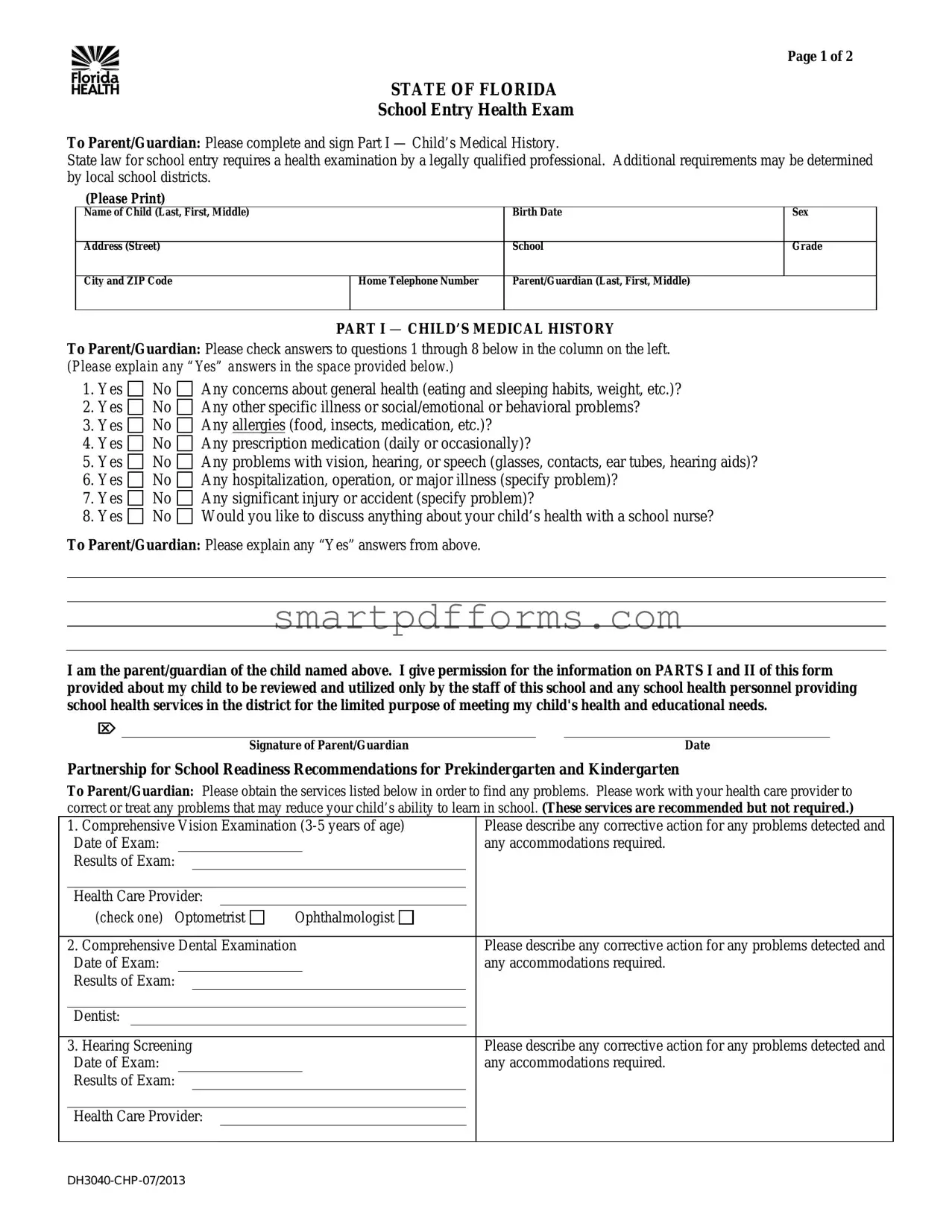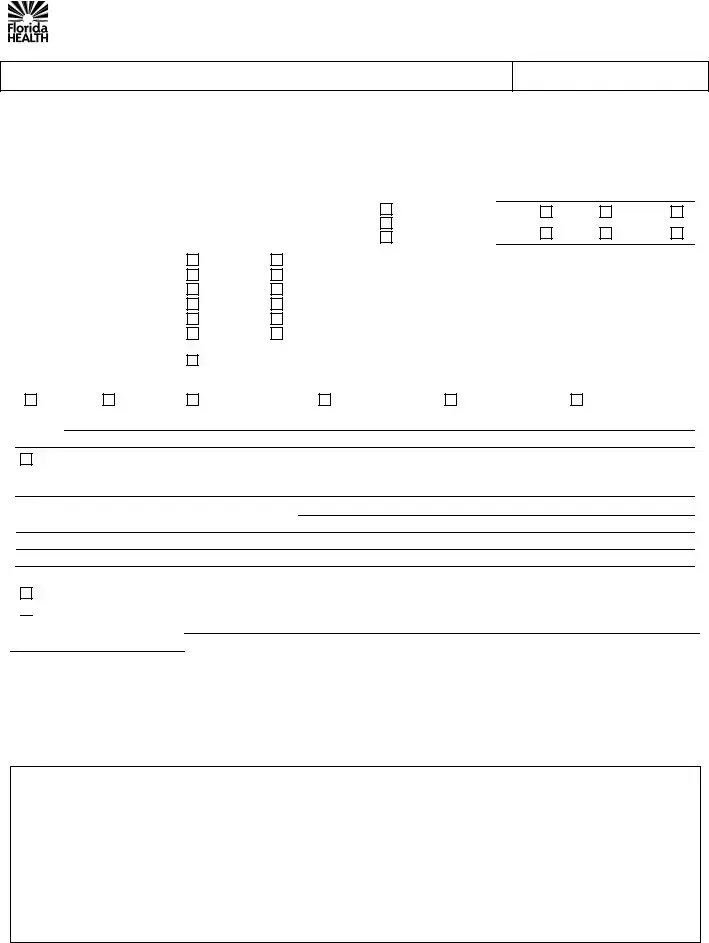What is the purpose of the Florida Health form?
The Florida Health form serves a dual purpose. First, it's a state-required document for children entering school that records a health examination conducted by a legally qualified professional. The information includes a comprehensive review of the child's medical history and current health status. Second, it allows school and health personnel to understand and accommodate the health and educational needs of the child, ensuring they have the necessary support for an optimal learning experience.
Who needs to complete the Florida Health form, and when?
Parents or guardians are responsible for filling out Part I of the form, which includes the child’s medical history. This should be done before the child starts school. Part II must be completed and signed by a qualified health care provider after conducting a physical exam. The exam must be conducted within one year prior to the child's enrollment in school.
What information is required in Part I of the form?
Part I requires the parent or guardian to provide information about the child's general health, specific illnesses, allergies, medications, and any history of hospitalizations or significant injuries. Parents are also asked if they wish to discuss their child’s health with a school nurse. They must clarify any "Yes" responses with explanations. Ultimately, the parent or guardian signs this part of the form, signaling consent for the school staff and health personnel to access and use the information.
Are there any recommended but not required health services mentioned?
Yes, the form suggests (but does not mandate) that parents or guardians obtain a comprehensive vision examination for prekindergarten and kindergarten-aged children (3-5 years), a comprehensive dental examination, and a hearing screening. For any identified problems, the form asks for information on corrective actions taken or needed accommodations.
What information must the health care provider fill out in Part II?
In Part II, the health care provider documents the results of the child's complete history and physical examination, including screenings for vision, hearing, dental health, and other standard health metrics. They must also note any health conditions that might require emergency action at school and specify any restrictions or adaptations needed for the child to participate in school activities, including physical education.
How is tuberculosis testing handled according to the form?
The form outlines targeted testing guidelines for tuberculosis (TB) risk, suggesting a Mantoux TB skin test for children in specific risk categories, such as recent immigrants or those in close contact with TB cases. However, it explicitly states that any TB test administration or related information should not be recorded on this form, emphasizing confidentiality in TB testing as part of the health examination process.
What should parents do if their child has a health condition that may impact their school experience?
Parents should provide detailed information about any health condition that could affect their child's educational experience in the space provided on the form. Additionally, open communication with the school's health personnel and the child’s health care provider is crucial to ensure that all necessary precautions and accommodations are in place for the child’s safety and learning needs.
Can the information on the form be shared with anyone outside of the school's staff?
The form is designed to be reviewed and used only by the school staff and health personnel for the purpose of supporting the child’s health and educational needs. Consent given by signing Part I limits the use of the information to these parties, ensuring the child's privacy is protected.
Is the child's participation in school activities affected by the health form?
Based on the health evaluation in Part II, the health care provider may note any restrictions or adaptations needed for the child’s participation in school activities, including physical education. This approach ensures that children can safely engage in school activities within any limitations their health might impose, with appropriate accommodations made as necessary.


 No
No  Any concerns about general health (eating and sleeping habits, weight, etc.)?
Any concerns about general health (eating and sleeping habits, weight, etc.)? No
No  Any other specific illness or social/emotional or behavioral problems?
Any other specific illness or social/emotional or behavioral problems? No
No  Any
Any  No
No  Any prescription medication (daily or occasionally)?
Any prescription medication (daily or occasionally)? No
No  Any problems with vision, hearing, or speech (glasses, contacts, ear tubes, hearing aids)?
Any problems with vision, hearing, or speech (glasses, contacts, ear tubes, hearing aids)? No
No  Any hospitalization, operation, or major illness (specify problem)?
Any hospitalization, operation, or major illness (specify problem)? No
No  Any significant injury or accident (specify problem)?
Any significant injury or accident (specify problem)? No
No  Would you like to discuss anything about your child’s health with a school nurse?
Would you like to discuss anything about your child’s health with a school nurse?
 This child may participate in school activities including physical education with the following restriction/adaptation. (Specify reason and restriction)
This child may participate in school activities including physical education with the following restriction/adaptation. (Specify reason and restriction)